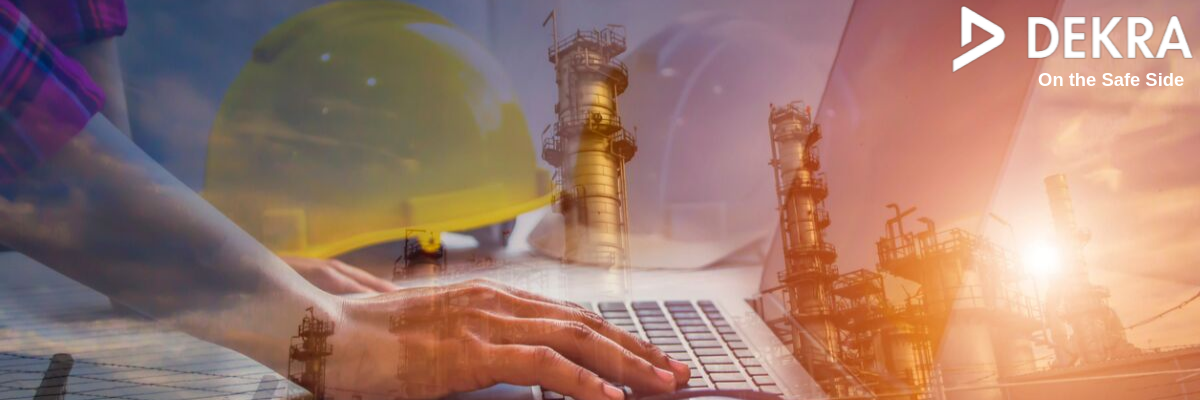Imagine that a team of utility workers is using a personnel lift to replace a large, heavy transformer. While taking down the old transformer, a rusted fastener breaks and the transformer falls, striking the ground. The good news is that since the team recognized the risk of falling objects, they set up a huge safety zone on the ground to keep people away from the work area. They also wore their personal protective equipment (PPE) and tied themselves off to prevent falling. Because of the preventive measures that the team took, no one is hurt.
In another situation, a worker servicing switchgear sets off an arc flash. Luckily, he’s wearing full protective equipment from head to toe. The flash chars his face shield and PPE above the waist, but he walks away unscathed. Additionally, he had set up a flash protection boundary around the work area, and three coworkers standing outside it were unharmed too.
When these teams log their safety reports, should they say that the incidents had potential for serious injury?
Some say no. They argue that the teams addressed the risk of serious injury, and the only exposures present might have been debris when the object hit the ground or from incidental fire caused by the arc flash. The teams protected themselves with their PPE and mitigated the exposure to others with their safety zones.
At DEKRA, we say yes. These teams should certainly be commended for protecting themselves and others. However, the situation is no different from getting into a serious car accident and walking away without a scratch because you wore your seatbelt and the airbags deployed. The potential for serious injury was still there. If you looked back at what happened before the accident, you could probably remember a few things that you or someone else could have done differently to prevent it.
Exposure to serious injury happens rarely in most industries. However, utility workers frequently work in high hazard environments, such as elevation, confined spaces, high voltage, and flammable gas. A 2018 study conducted by DEKRA found that while the exposure for all industries on average was 25% of all recordable injuries, the Utilities sector is 32%, significantly higher than the industry average.
People from the shop floor to senior leadership can get confused when trying to categorize the severity potential of a safety incident. Workers may not want the scrutiny that comes with an incident with serious or fatal potential: it could mean investigation, review, discipline, and getting labeled by coworkers for not being team players. Senior leaders may try to convince themselves that the exposure was effectively controlled or this was a one-off event. Middle-level leaders may fear losing their credibility with the leaders above them or their reports. Finally, the difficulty in correct categorization often reflects a bias on outcomes rather than exposure to injury, a mindset that’s still all too common. These are just some of the reasons why people with good intentions underestimate risk.
The best defense against serious injury, better than procedures, safety zones, and PPE, is the awareness and reduction of exposure. By correctly identifying and tracking SIF potential events (SIFp), teams and their organizations can identify trends and learn from what happened to prevent events like these in the future. Taking a broader view, safety leaders need to understand the prevalence of risks. If a work team experiences a SIFp, but no one reports it, then the organization continues with a blind spot. If this exposure happens 100 times a day, the organization could have a much bigger issue than it realizes.
By underestimating exposure, we miss opportunities to understand it. Here are some simple steps you can take to get a clearer picture of safety incident exposure.
First and foremost, we need to develop an accurate view of where the SIF exposures exist. To do this, we first analyze a representative sample of incidents to determine the high-risk situations that exist in your work. Now that we have a clear picture of the SIF exposure situation in the organization, we need to develop a SIF decision tree and internal decision rules or decision logic to allow consistent classification and analysis of incidents. Lastly, we recommend applying the following decision rules, questions and logic for the correct categorization and understanding of SIFp.
Shift your perspective from outcome to potential. When replacing a transformer, it’s not supposed to fall. When servicing a switchgear, there shouldn’t be an arc flash. Why did it happen? Walk back through your processes and see what was missed. By unraveling the breakdowns that led to the incident, you see what you need to fix, and where you need to focus your priorities to close additional gaps.
Look at the big picture. Ask yourself, if this exposure happened one hundred times, would you be confident that a serious injury wouldn’t happen? How many other work teams like these are out there, doing this work every day? Are you confident that all of them are safe?
One decision makes all the difference. Think about the incident. If one factor had changed, would that still be the case? At each step, was there a direct control that could have removed the exposure? Serious injuries are often the result of a series of failures, any one of which could have stopped the chain of events. While this means it only takes one decision to break the chain, this also means that we can’t underestimate the importance of addressing every link in the chain.
Talk to people who were there. Safety incident severity is often classified by people who weren’t there, sometimes reading a report long after the fact. See what the people who were there thought about it. That immediate experience and knowledge can give you an understanding that a report can’t.
Utility companies that want to take a proactive approach to reducing serious injury can start by getting a clear understanding of their exposures. Near misses can have hard lessons, but they’re not as hard as a serious injury or fatality.
To learn more about DEKRA's Serious Injury & Fatality PreventionTM Services, please visit our website

